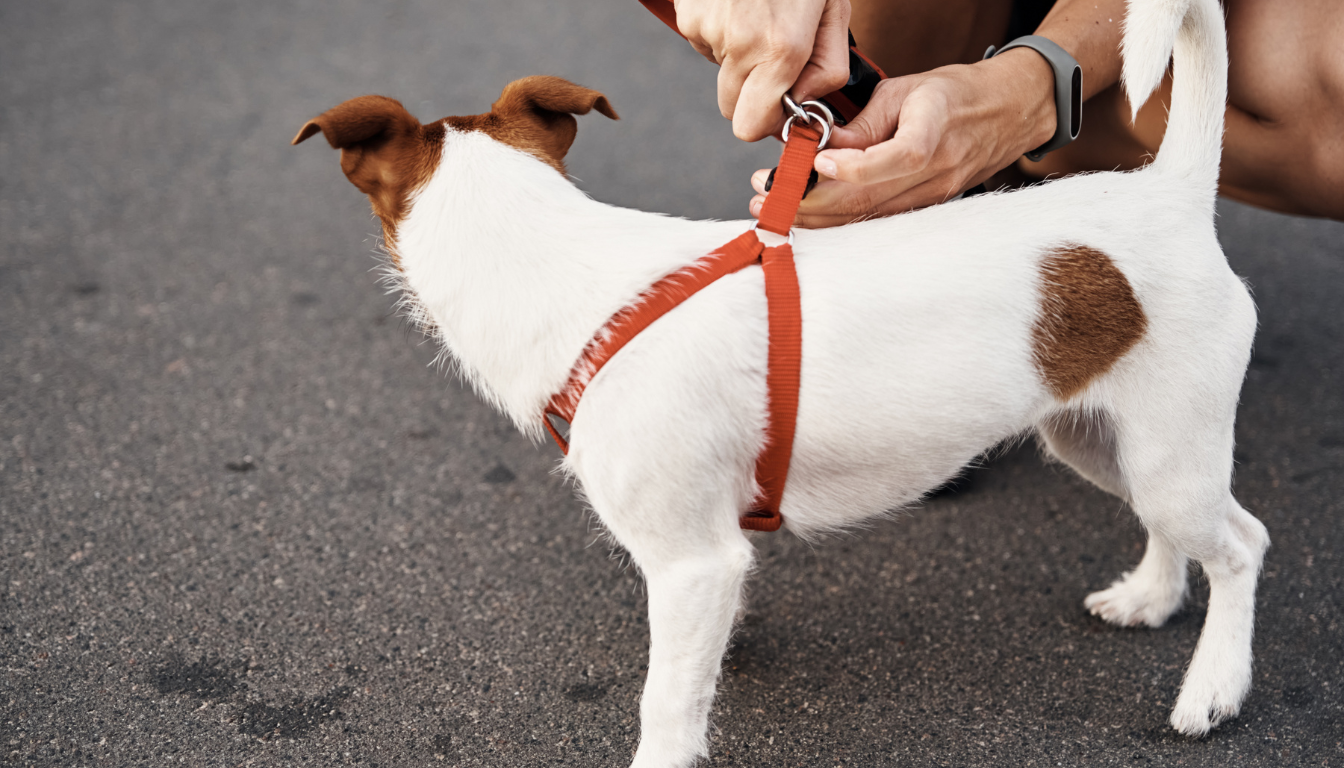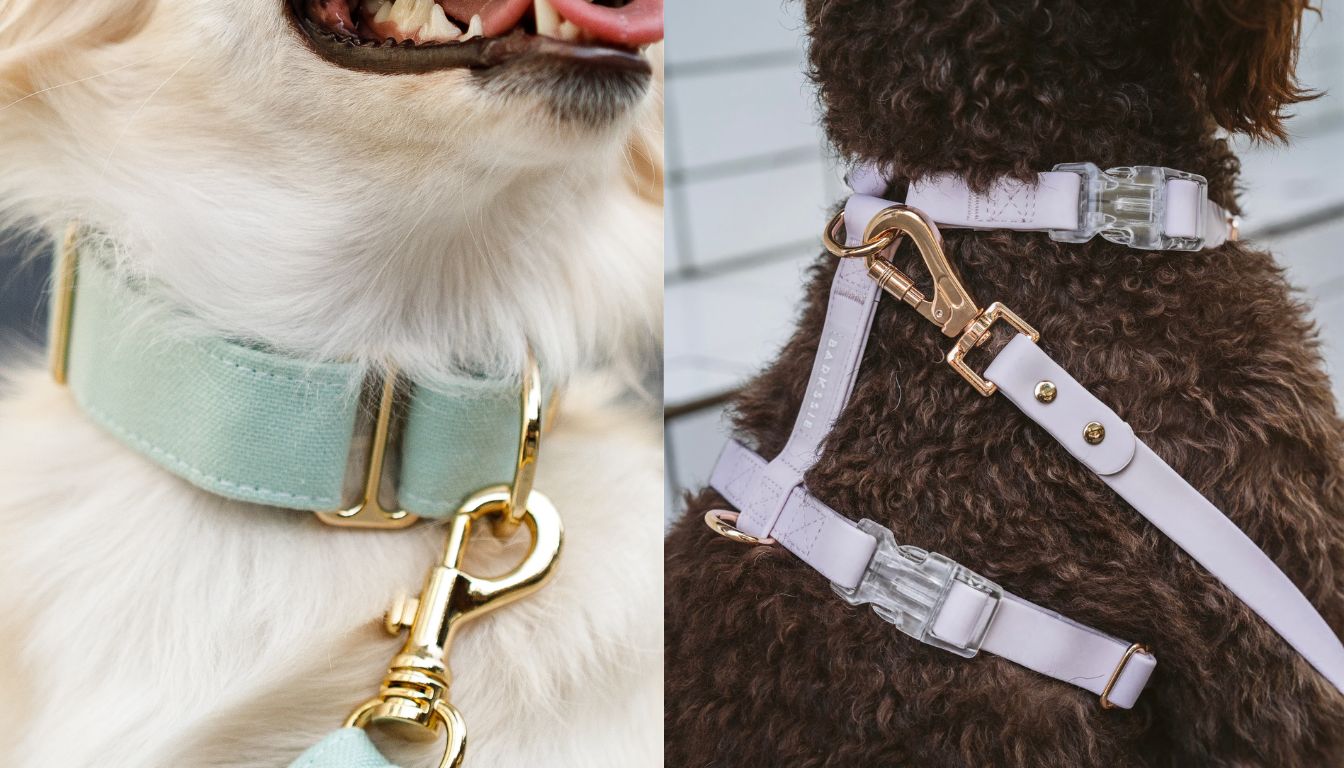Article: How Do You Choose the Best Dog Harness for Your Pup?

How Do You Choose the Best Dog Harness for Your Pup?
Choosing the right dog harness is key for your pup's comfort and safety. Just like picking the right shoes for walks, finding the perfect harness is vital. Harnesses spread out the pressure, unlike collars, which can be harmful, making them safer for dogs that pull.
Getting the right fit is essential. Measure your dog's chest, neck, and consider their breed. A good harness should fit snugly, with just two fingers under the straps. If it's too loose, your dog might slip out.
There are many harness types, from no-pull for training to padded ones for long walks. You can choose between plastic and metal buckles, with metal being better for active dogs. Over-head harnesses add extra padding and are great for older or more energetic dogs. Step-in harnesses are handy but need to fit correctly for safety.

In Australia, keeping your dog safe in cars is a must. Choosing the right fit and style ensures your dog stays safe and comfortable on all adventures.
Understanding the Importance of a Proper Fit
Choosing the right dog harness is key for your pet's comfort and safety. A well-fitting harness keeps your dog safe and happy during walks. It's important to pick one that doesn't chafe or restrict movement.
Why Measurements Matter
Getting your dog's measurements right is essential for a good fit. Harnesses are safer than collars, which is great for dogs with neck issues. Breeds like Bulldogs and Pugs do better with harnesses because of their neck shape.
Dogs with health problems or growing puppies need harnesses too. A good harness should fit snugly but not too tight. It should leave room for two fingers under the harness.
How to Measure Your Dog Correctly
To measure your dog, you need to know two key points: the neck base and the chest's widest part. Use a cloth tape or string for accurate measurements. Harnesses have multiple points for better fit and security.
Choose materials like nylon, leather, or mesh based on your dog's needs. This ensures they're comfortable and safe during activities.

Avoiding Common Fit Issues
Common fit problems like chafing or restricted movement must be avoided. Different harness styles meet different needs. For example, front-clip harnesses help with pulling, while back-clip ones are better for trained dogs.
A proper fit prevents discomfort and reduces pulling. Reflective harnesses are also safer for evening walks, making your dog more visible.
| Harness Type | Key Feature | Suitable For |
|---|---|---|
| Front-Clip Harness | Manages pulling behaviour | Strong pullers |
| Back-Clip Harness | Comfort for well-trained dogs | Small breeds, trained dogs |
| No-Pull Harness | Two D-rings for control | Larger dogs, mobility issues |
| Step-In Harness | Ease of use | Escape artist dogs |
| Safety Harness | Car compatibility | Traveling dogs |
| Tactical/Service Harness | Durability & utility pockets | Service dogs, active breeds |
Different Types of Dog Harnesses
Choosing the right dog harness is key for your dog's comfort and safety. You must think about your dog's needs and behaviour. Let's look at the different types of harnesses out there.
Standard Back-Clip Harness
Standard back-clip harnesses are great for calm, well-trained dogs. They are simple to put on and comfy for daily use. You can find them in materials like nylon, which is both light and strong.
Front-Clip and Dual-Clip Harnesses
Front-clip harnesses help control dogs that pull. They steer the dog's focus towards you, aiding in leash training. Dual-clip harnesses offer both front and back attachment points, making them versatile for training and daily activities.
Step-In Harness
Step-in harnesses are good for dogs that don't like harnesses over their heads. They have two leg loops and adjust at the neck, girth, and chest. These harnesses come in padded, mesh, or vest styles, which are great for breeds like Bulldogs and Dachshunds.

No-Pull Harness
No-pull dog harnesses spread pressure evenly, stopping pulling behaviour. They're perfect for active or strong dogs that pull on the leash. These harnesses make walks safer and more comfortable.
Safety Harness
Safety harnesses are used for car rides to keep your dog safe. They attach securely to the seatbelt system, reducing injury risks during sudden stops or accidents.
Tactical or Service Harness
Tactical or service harnesses are tough and have many attachment points and pockets. They're for working dogs, like service dogs, police dogs, and military dogs. These harnesses are built for demanding tasks.
| Harness Type | Ideal For | Features |
|---|---|---|
| Standard Back-Clip | Calm Dogs | Easy to use, comfortable |
| Front-Clip | Dogs That Pull | Provides better control, useful for training |
| Dual-Clip | Versatile Use | Front and back attachment points |
| Step-In | Dogs That Dislike Over-the-Head | Two loops for legs, adjustable |
| No-Pull | Energetic Dogs | Even pressure distribution, discourages pulling |
| Safety | Travel Safety | Secures to seatbelt system |
| Tactical or Service | Working Dogs | Durable, multi-functional |
How Do You Choose the Best Dog Harness for Your Pup?
Choosing the right dog harness is important. You need to think about your dog's size, behaviour, and needs. Small dogs like Chihuahuas need lightweight harnesses to avoid neck pressure. Big, active dogs like Labradors need strong harnesses for better control.
Researching and comparing harnesses can help a lot. A study by Hao-Yu Shih, PhD, found dogs in harnesses pull more than those in collars. The Front Range Harness is good for most dogs with chests from 13 to 42 inches. The harness should fit snugly, leaving just two fingers of space.
Here are some tips for selecting dog harness based on a study of 15 harness models and over 300 hours of testing:
- Washability is key; 71% of dog owners never wash their harnesses.
- Use metal buckles for energetic dogs or car travel for extra strength.
- Look for harnesses with 3-6 adjustment points for a better fit.
- Reflective Dog Harness is good for extra security with two metal D rings.
- Front-clip harnesses help stop pulling by guiding the dog to the side.
Harnesses should be comfy and last long. The size should be based on measurements, not weight. Measure from the bottom of the rib cage to the back, ensuring a snug fit.
Remember, puppies can be fitted for harnesses from 9-10 weeks old, but they grow fast. Adjustable strap harnesses are best for growing puppies or dogs.
| Size | Chest Girth | Harness Type | Recommended For |
|---|---|---|---|
| Small | 13-18 inches | Lightweight Vest | Chihuahua, Yorkie |
| Medium | 18-28 inches | Adjustable Strap | Border Collie, Australian Shepherd |
| Large | 28-42 inches | Sturdy Multi-Clip | Labrador, German Shepherd |
Factors to Consider for Different Dog Breeds
Choosing the right harness for your dog is all about their breed, size, and needs. Each breed has its own special requirements for a comfortable and safe fit. Whether your dog is small, medium, or large, picking the right harness is key for their comfort and safety.
Small Breeds: Chihuahua, Yorkie, Daschund
Small breeds like Chihuahuas, Yorkies, and Dachshunds need special care. They have delicate frames and can easily get tracheal issues. Look for lightweight, well-padded harnesses that spread the weight evenly.
Standard back-clip harnesses are best for these dogs. They help avoid throat injuries and support without being too heavy. Make sure the harness fits snugly but comfortably, using the two-finger rule.
Medium Breeds: Border Collie, Australian Shepherd
Medium breeds like Border Collies and Australian Shepherds are full of energy and agility. They need harnesses that can keep up with their active lives. Front-clip and dual-clip harnesses are great for controlling pulling and giving more control.
Adjustable straps are a must for a secure fit without limiting movement. Choose materials like nylon or leather for durability, perfect for outdoor lovers.
Large Breeds: Labrador, German Shepherd, Husky
Large breeds like Labradors, German Shepherds, and Huskies need strong and adjustable harnesses. No-pull harnesses are best for them, as they stop pulling by spreading the pressure across the chest. For the best control and comfort, pick a harness that's crash-tested.
This ensures a safe fit during walks and protects during car rides. The right harness balances comfort, control, and safety. Knowing your dog's needs and lifestyle helps choose the best harness for both of you to enjoy your time together.
FAQ
How do you choose the best dog harness for your pup?
When picking a dog harness, think about your dog's size, how they behave, and what activities they do. The harness should fit well, be tough, and adjustable. Small dogs need light, easy harnesses, while big dogs need strong ones with many attachment points.
Why are proper measurements important when choosing a dog harness?
Getting the right measurements is key for a comfy fit. It stops your dog from feeling uncomfortable or trying to get out. A good fit means safer, happier walks for your dog.
How do I measure my dog correctly for a harness?
Measure your dog's neck and chest's widest part. Use a flexible tape measure for a snug fit. Accurate measurements help pick a harness that's comfy and safe for your dog.
What are standard back-clip harnesses and when should they be used?
Standard back-clip harnesses have a leash attachment between the shoulder blades. They're best for calm dogs and those that don't pull a lot. They're easy to use and keep your dog comfortable.
What is the purpose of front-clip and dual-clip harnesses?
Front-clip harnesses help stop pulling by changing the dog's direction. Dual-clip harnesses have both front and back attachments. They offer control for different situations.
How do step-in harnesses work?
Step-in harnesses need your dog to step into them, then they're secured around their chest. They're good for dogs that don't like harnesses put over their head. They provide a secure fit without neck stress.
What features make no-pull harnesses effective?
No-pull harnesses spread pressure evenly to stop pulling. They have front leash attachments to steer the dog. They're perfect for training and walks.
When should you consider a safety harness for your dog?
Safety harnesses are for car rides to keep your dog safe. They attach to the car's seatbelt, keeping your dog safe in sudden stops or accidents.
What are tactical or service harnesses, and who are they suitable for?
Tactical or service harnesses are for working dogs, like those in service, search and rescue, or military roles. They have handles, pockets, and MOLLE webbing for carrying gear.
Which harnesses are best for small dog breeds like Chihuahuas and Yorkies?
Small breeds need harnesses that are gentle and don't put pressure on their necks. Look for light, padded harnesses that are secure but comfy.
What harness features suit medium breeds like Border Collies and Australian Shepherds?
Medium breeds need harnesses that fit their active lifestyle. Choose sturdy ones with many attachment points and padding for comfort during walks or training.
How should you choose a harness for large breeds like Labradors and German Shepherds?
Large breeds need strong, adjustable harnesses for control and comfort. Look for durable materials, sturdy buckles, and many attachment points to handle their strength and activity.
